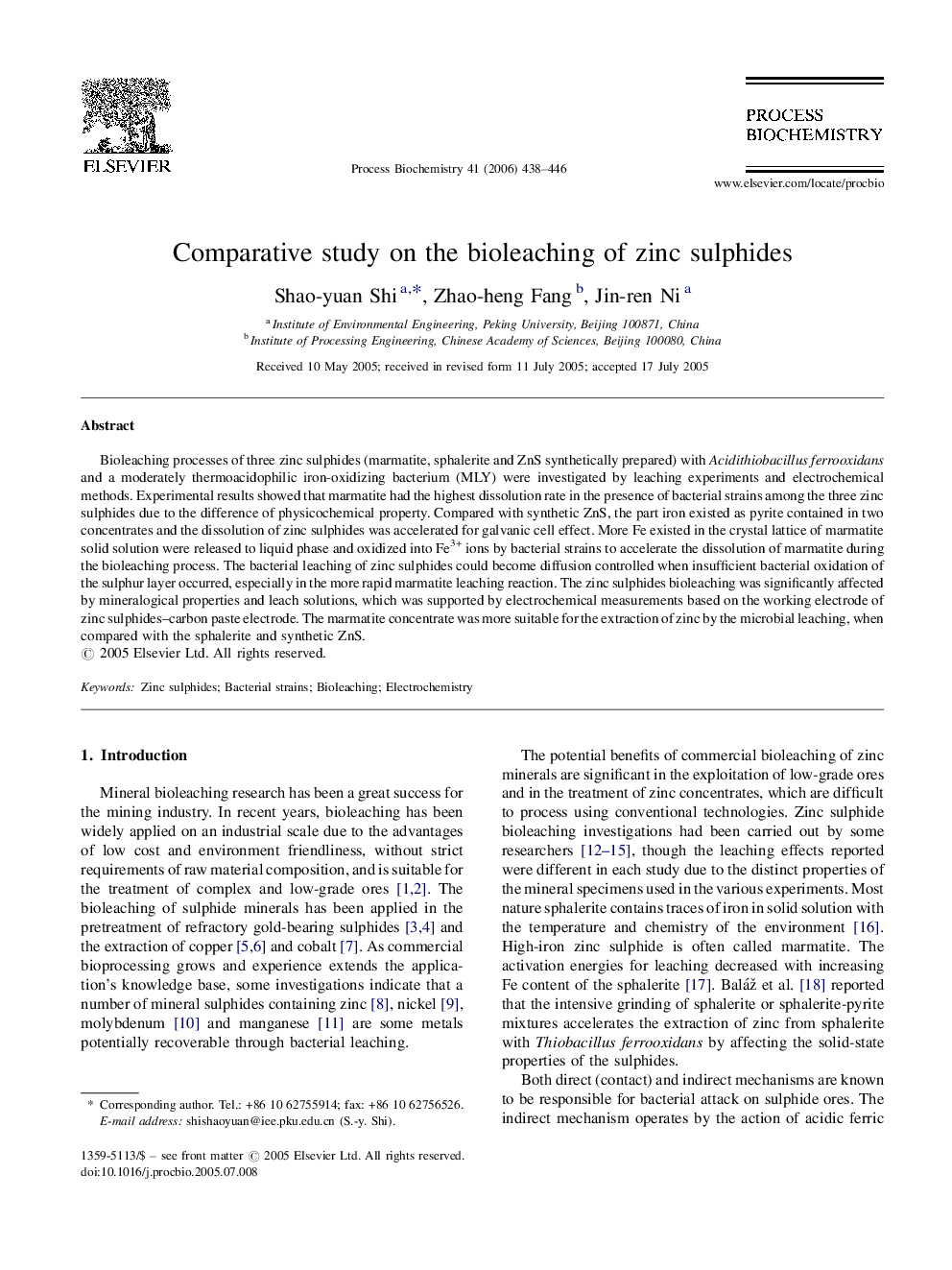| Article ID | Journal | Published Year | Pages | File Type |
|---|---|---|---|---|
| 36180 | Process Biochemistry | 2006 | 9 Pages |
Bioleaching processes of three zinc sulphides (marmatite, sphalerite and ZnS synthetically prepared) with Acidithiobacillus ferrooxidans and a moderately thermoacidophilic iron-oxidizing bacterium (MLY) were investigated by leaching experiments and electrochemical methods. Experimental results showed that marmatite had the highest dissolution rate in the presence of bacterial strains among the three zinc sulphides due to the difference of physicochemical property. Compared with synthetic ZnS, the part iron existed as pyrite contained in two concentrates and the dissolution of zinc sulphides was accelerated for galvanic cell effect. More Fe existed in the crystal lattice of marmatite solid solution were released to liquid phase and oxidized into Fe3+ ions by bacterial strains to accelerate the dissolution of marmatite during the bioleaching process. The bacterial leaching of zinc sulphides could become diffusion controlled when insufficient bacterial oxidation of the sulphur layer occurred, especially in the more rapid marmatite leaching reaction. The zinc sulphides bioleaching was significantly affected by mineralogical properties and leach solutions, which was supported by electrochemical measurements based on the working electrode of zinc sulphides–carbon paste electrode. The marmatite concentrate was more suitable for the extraction of zinc by the microbial leaching, when compared with the sphalerite and synthetic ZnS.
